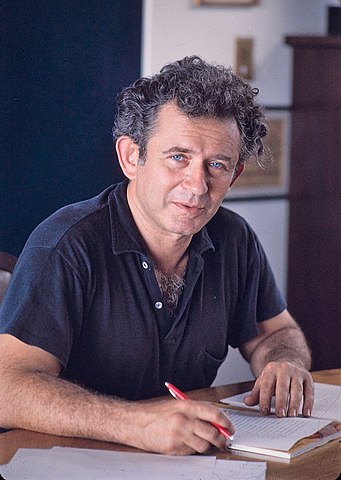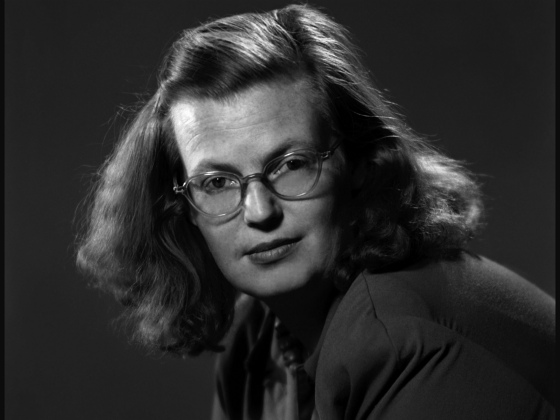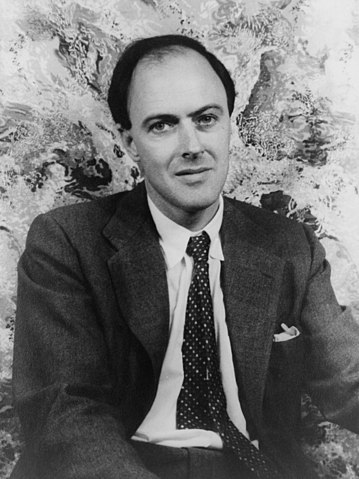The hero’s journey doesn’t just appear in novels! Discover our guide with the best hero’s journey short story examples.
The hero’s journey is a narrative structure used in literature for centuries. It can be found in the works of the best fantasy authors such as The Lord of the Rings and can also be used to powerful effect in short stories. Below is our pick of the best short stories that utilize the hero’s journey form: their diversity may surprise you!
Contents
- Here Are The Best Hero’s Journey Short Story Examples
- 1. Story of Your Life – Ted Chiang
- 2. The Swimmer – John Cheever
- 3. The Long Walk – Richard Bachman
- 4. Never Stop on a Motorway – Jeffrey Archer
- 5. The Greatest Thing in the World – Norman Mailer
- 6. One Ordinary Day, with Peanuts – Shirley Jackson
- 7. The Ghost of the Crossroads – Frederick Manley
- 8. Leaf by Niggle – J.R.R. Tolkien
- 9. Shot Down Over Libya – Roald Dahl
- 10. The Way of the Cross – Daphne Du Maurier
Here Are The Best Hero’s Journey Short Story Examples
1. Story of Your Life – Ted Chiang

Incorporating the hero’s structure narrative but molding the form to serve the story, Story of Your Life begins with the narrator, Dr. Louise Banks, speaking to her as-yet-unborn child. Banks, an experienced linguist, is brought on board to attempt to communicate with aliens whose ships have arrived mysteriously at locations worldwide.
It transpires that the past and future appear to the aliens with the same clarity as the present. Banks’ Return is represented by her memories of the date from the tale’s beginning and her words to her unborn child, but with the Elixir: knowledge. You might also be interested in these personal narrative examples.
“More interesting was that Heptapod B was changing the way I thought.”
Ted Chiang, Story of Your Life
2. The Swimmer – John Cheever

Beginning in an ordinary, affluent neighborhood in America, Ned Merrill is relaxing beside a friend’s pool on a summer’s day. But things take a surreal turn when Merrill decides that, to get home, he will swim across every backyard pool between his friend’s home and his own.
Although his endeavor starts as a fun frolic, it quickly becomes entirely different as Merrill encounters disgruntled neighbors and finds himself in uncomfortable situations. He eventually completes his swim and makes it back to his home. But the lightness of the venture has long gone, and when he realizes his house is empty, we get the sense that he’s talking about a deeper hollowness.
“He had done what he wanted, he had swum the county, but he was so stupefied with exhaustion that this triumph seemed vague.”
John Cheever, The Swimmer
3. The Long Walk – Richard Bachman
This novella from Stephen King, written under a pen name, features a narrator who follows both a literal and figurative hero’s journey. It’s set in a near-future dystopian version of the USA, where every year, The Long Walk is broadcast live. It follows one hundred boys who’ve registered to appear in the contest. The starting gun sounds, and they set off; the winner is the last one standing.
Our hero Garraty, leaves his home at the start of the story, driven by his mother, heading to the starting line. His journey takes him over a hundred miles and over state lines. At the end of the tale, he receives the Elixir – the ultimate treasure – but it comes at a terrible cost. You might also be interested in these tragic hero examples.
“None of us really has anything to lose. That makes it easier to give away.”
Richard Bachman, The Long Walk
4. Never Stop on a Motorway – Jeffrey Archer

The Call to Adventure, a key stage of the hero’s journey, is delineated in this short story: the protagonist, Diana, receives an invitation to her friend’s farmhouse. But on the drive there, Diana becomes increasingly nervous. She’s convinced an ominous-looking black van is tailing her.
There are trials to overcome on her journey: traffic is slow, she’s stressed, and before joining the motorway, she accidentally hits a cat, killing it. The twist is too good to ruin by revealing, but it’s certainly true to say that the hero’s journey structure lends itself very well to the suspense genre.
“Diana gathered up her bag and walked purposefully towards the door, dropping the contract on Phil’s desk without bothering to suggest that he have a good weekend.”
Jeffrey Archer, Never Stop on a Motorway
5. The Greatest Thing in the World – Norman Mailer

Written during the author’s sophomore year at Harvard, this short story follows Al Groot, who we meet haggling for a doughnut and coffee, remembering when he had more cash. He decides to hitch a ride with three strangers who walk into the cafe by making them understand that he has more money than he does (the Departure).
Later, he wins a gamble on a pool game but insists on quitting, angering his companions (The Initiation). They bundle him into their car and drive off with him, but Groot escapes by jumping out of the moving vehicle (The Return). The Greatest Thing in the World won Story magazine’s annual college contest in 1941. The ‘greatest thing’ – aka the Elixir, is luck. You might also be interested in these hero’s journey examples in real life.
“He stood there a small, old, wrinkled boy of eighteen or nineteen.”
Norman Mailer, The Greatest Thing in the World
6. One Ordinary Day, with Peanuts – Shirley Jackson

First published in 1955, this short story from the master of the form, Shirley Jackson, offers a new spin on the hero’s journey story. We begin the tale witnessing Mr. John Johnson going about his day in a good mood, spreading goodwill wherever he goes.
When Mr. Johnson returns home, his benevolent mission complete, the Elixir is revealed and passed on, baton-like, to his wife when we learn the terrible truth: Mr. and Mrs. Johnson take turns undertaking acts of goodness – and acts of evil.
“Mr. Johnson radiated a feeling of well-being as he went down the steps and onto the dirty sidewalk.”
Shirley Jackson, One Ordinary Day, with Peanuts
7. The Ghost of the Crossroads – Frederick Manley
A traveler sets out from a visit to a friend to return to the inn where he’s staying; it’s a bitter, snowy night, and he becomes hopelessly lost, wandering in the blizzard. He turns up suddenly at this inn – late at night – in a state of terrible shock, meeting the Mentor figure in the story: Andy Sweeney, the publican.
We learn of his terrible ordeals and the sinister stranger he met at the crossroads. A seemingly well-to-do gentleman who is inordinately fond of gambling. After a time, the penny drops, and the narrator wises up to who exactly he was gambling against and what was at stake. In a frenzied return home, we see the narrator enter the Ordinary World again, where he tells the story of his close encounter and even closer shave.
“Night, and especially Christmas night, is the best time to listen to a ghost story. Throw on the logs! Draw the curtains! Move your chairs nearer the fire and hearken!”
Frederick Manley, The Ghost of the Crossroads
8. Leaf by Niggle – J.R.R. Tolkien

This is one of the only short stories the Lord of the Rings and The Hobbit author ever wrote, and, despite the extremely different subject matter, it also follows the hero’s journey structure. The tale is an allegory following an artist’s journey through the stages of death. It could be viewed as a lighter take on that other epitome of the hero’s journey form, Dante’s The Divine Comedy.
Crossing the first threshold, Niggle arrives at the workhouse (purgatory) and, in gradual degrees, with the assistance of a couple of otherworldly and unseen mentors, arrives in the countryside (heaven).
“Things might have been different, but they could not have been better.”
J.R.R. Tolkien, Leaf by Niggle
9. Shot Down Over Libya – Roald Dahl

The hero’s journey structure can lend wonderfully to true-life stories; it’s a great tool to hone the narrative arc and regulate a story’s pace. The beloved children’s author, Roald Dahl, uses it to powerful effect in this short story, which details his experience of crashing in the desert in 1940 when, during World War II, he was flying for the Royal Air Force.
After being hit by ground anti-aircraft fire, Dahl believes he can return to the base, but his plane ends up nose diving into the sand. The author is badly wounded and must hope for rescue by the Allied Forces before it’s too late. For more, check out our hero’s journey examples in Disney movies.
“Blast this stick; it won’t come back. They must have got my tailplane and jammed my elevators.”
Roald Dahl, Shot Down Over Libya
10. The Way of the Cross – Daphne Du Maurier

Leaving the Ordinary World of their quiet middle-class English village behind, their local vicar leads a group of modern-day pilgrims on a sightseeing trip to the Middle East. Following a visit to the Garden of Gethsemane, strange events and trials beset the travelers: each is forced to confront the fate they most fear. However, their experiences are ultimately liberating, and they return home with new self-knowledge. Why write fanfiction? Check out our guide to find out!
“Du Maurier excelled at evoking a sense of menace. Darkness comes to the fore in her macabre and chilling short stories”
Lucy Sholes, writing for BBC Culture